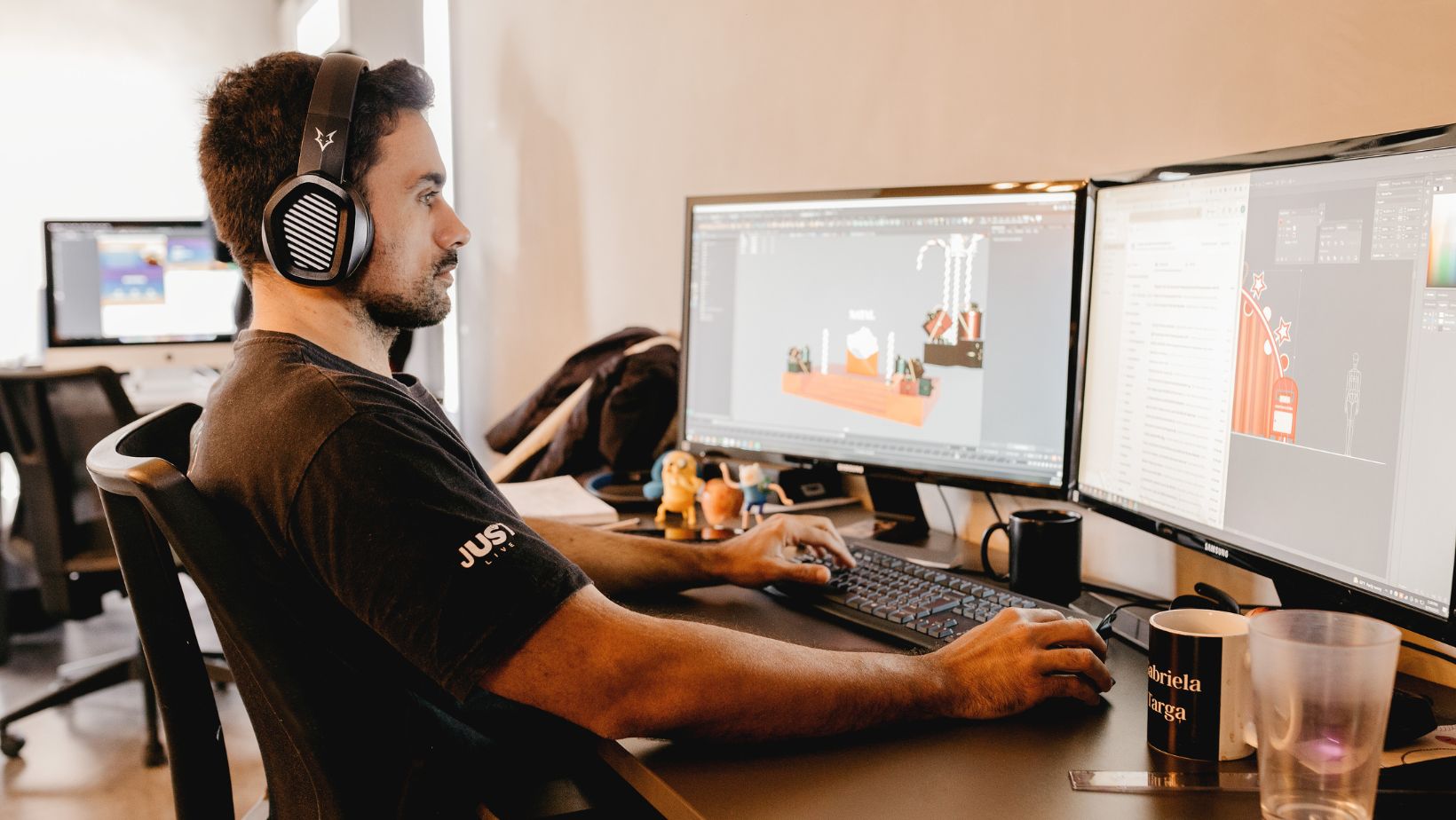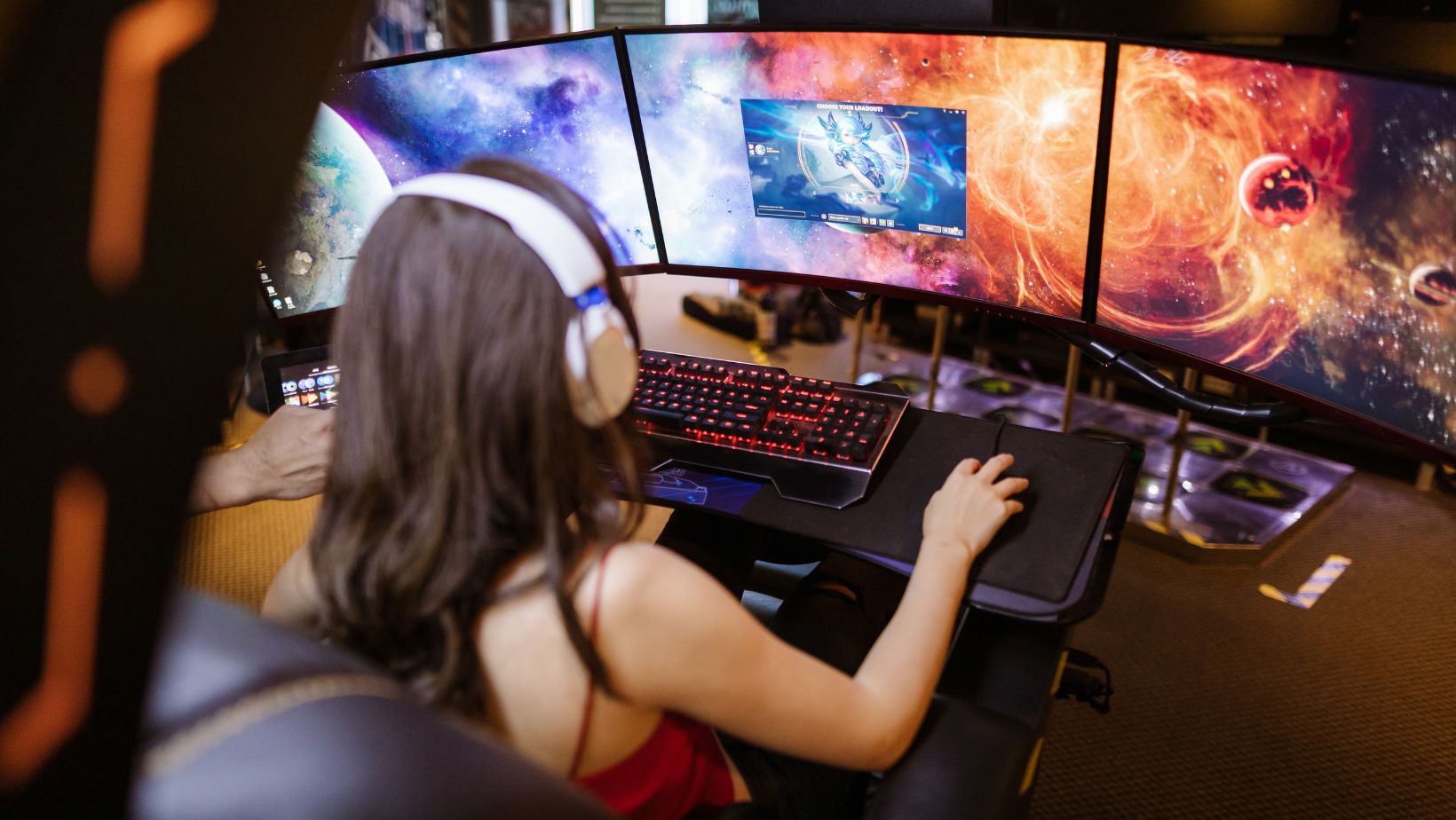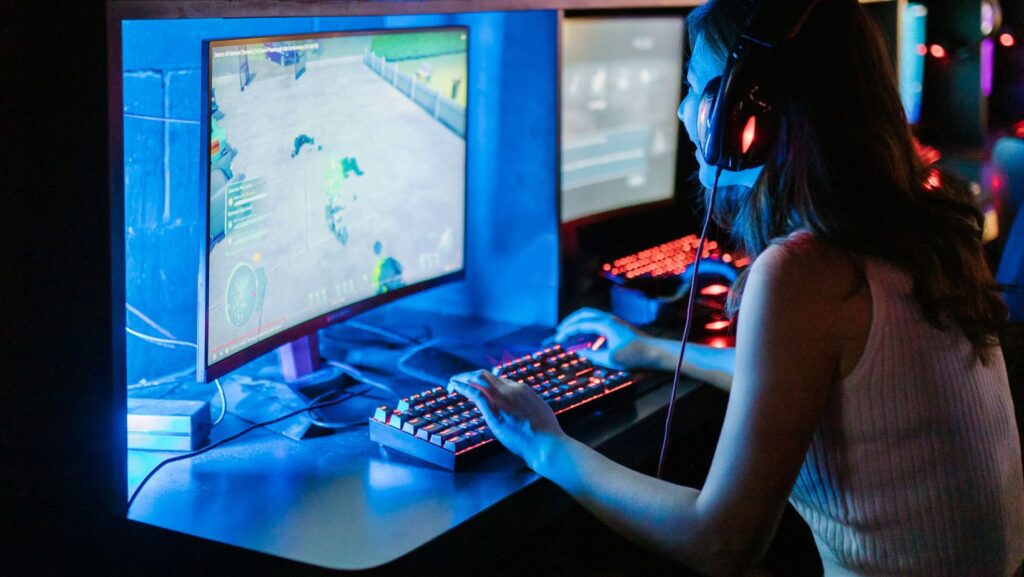The benefits of using two monitors for work and gaming are clear, but theory alone isn’t enough. To create a truly comfortable and efficient dual-screen setup at home, you need to be aware of potential pitfalls and key considerations. Let’s explore the pros and cons of dual monitors, how to choose the right models, the best placement strategies, and other important factors.
Who Needs Dual Monitors and Why?
Let’s start with the basics. A dual-monitor setup is a lifesaver for graphic designers, writers, software engineers, and video editors. One screen displays primary work applications, while the other holds additional files, notes, a browser, or just a site where you can spend your breaks, like https://nationalcasino.com/ or Amazon.
Gamers can set up two monitors to expand their field of view (Nvidia users can achieve this using the Surround feature in the Nvidia Control Panel).
Helpful Tips for Choosing Your Setup
- For Programmers: Opt for a second monitor with a stand that rotates 90 degrees, allowing for a vertical orientation. This makes coding significantly more convenient.
- For Immersive Gaming: Look for monitors with ultra-thin bezels (frameless models). Keep in mind that they must be positioned in a straight line, so measure your desk space in advance. If this isn’t possible, consider a single curved monitor for better immersion.
- For Writers and Professionals: Be cautious with large screens (27 inches and above) on small desks. Constantly shifting focus between screens can cause discomfort. If you prefer a Full HD setup, a pair of 24-inch monitors may be a better fit.
Choosing the Right Models: A Smart Approach
The most common mistake? Randomly buying two different monitors—whether from different brands or the same model but from different production years. This can lead to several issues:
- Differences in panel technologies result in inconsistent colors and brightness levels. Even manual calibration in Nvidia settings won’t achieve a perfect match.
- Uneven backlighting or a “glow” effect on one monitor can ruin the visual experience.
- Height adjustment might not be possible if one monitor lacks that feature.
- Pairing a TN panel with an IPS panel will create drastically different visuals. This may not be a big deal for coding or writing, but it will strain your eyes.
The Great Solution
Buy two identical monitors from the same model series and production year. This ensures a 90% chance of getting matching panels, providing a seamless display experience.
Desk Space and Monitor Placement
Before purchasing dual monitors, make sure you have enough space to position them correctly. Here are the most common setups:
- Side-by-Side, Flush Alignment: Ideal for maximizing workspace and essential for Nvidia Surround gaming.
- Primary Monitor in Front, Secondary at an Angle: Suitable for those who need an extra screen for occasional use.
- One Horizontal, One Vertical: A favorite among programmers and those who frequently use chat and social media.
- Stacked Monitors: Great for movie lovers and gamers who recline in their chairs with a controller.
Mounting Options
A monitor arm (VESA mount) allows for more flexibility in screen positioning. Some mounts clamp onto the desk, while others require drilling.
Resolution and Screen Size: Finding the Right Balance
When choosing a monitor, ignore trends and online hype—go with what works best for you. The standard resolutions are:
- 24 inches – Full HD (1920×1080)
- 27 inches – 2K (2560×1440)
- 32+ inches – 4K (3840×2160)
However, personal factors like eyesight, desk depth, and viewing distance matter. What looks sharp to one person might be uncomfortable for another.
A Word on Performance
Higher resolution increases the load on your GPU. If your graphics card handles 70 FPS in Full HD, don’t expect the same in 4K—especially in high-end games. If you enable Surround mode, frame rates can drop even further.
Budget-Friendly Picks
If 2K or 4K isn’t a priority, consider affordable 24-inch or 27-inch Full HD monitors from Xiaomi. They offer excellent color accuracy, and their 100Hz and 165Hz refresh rates ensure smooth performance.
Choosing the Right Panel Technology
TN vs. VA vs. IPS
- For esports: TN or VA panels with low response times (100Hz+ refresh rate) are ideal.
- For designers: Factory-calibrated IPS panels with certification are the best choice. A 60Hz refresh rate is sufficient.
- For general use: Any panel type can work, but viewing angles matter. With dual monitors, you won’t always be looking at both screens head-on, so poor viewing angles can cause color shifts.
Monitor Ports and Compatibility
Check your graphics card outputs against your monitor’s input options. Keep in mind:
- Many monitors support their highest refresh rate only via DisplayPort.
- Avoid hybrid cables (e.g., HDMI-to-DisplayPort) as they can cause issues.
- Stock cables included with budget monitors may need upgrading for optimal performance.
Gaming Monitors: Real vs. “Fake” Gaming Models
What to Look for in a True Gaming Monitor
A proper gaming monitor isn’t just about high refresh rates and low response times—the panel quality matters too.
Many budget “gaming monitors” use overclocked, low-quality panels with:
- Uneven backlighting
- Poor factory calibration
- Oversaturated, unrealistic colors
Essentially, the “gaming” label is just marketing.
Do You Even Need a Gaming Monitor?
- If you rarely game or prefer slow-paced genres (strategy games, EA FC, etc.), an expensive gaming monitor won’t improve your experience.
- If you love AAA games and fast-paced shooters, investing in a high-quality gaming display makes sense.
Refresh Rate (Hz): Do You Really Need 144Hz+?
Don’t overpay for high refresh rates unless you actually need them.
For instance, Asus still produces top-rated 60-75Hz monitors for designers, and people love them.
- Gamers: 100Hz+ is essential for smooth gameplay.
- Writers, programmers, and casual users: 60-75Hz is perfectly fine.
Prioritizing Panel Quality Over Hz
If you have to choose between:
- A high-quality panel with moderate refresh rates
- A mediocre panel with extremely high refresh rates
Always go for option #1.
Color Calibration: Getting a Uniform Display
If your two monitors don’t match in color accuracy, use the Nvidia or AMD Control Panel:
Key Settings Explained
- Color Channel: Adjusts RGB individually or together.
- Brightness & Contrast: Tweaks overall color intensity.
- Gamma: Controls color depth—higher values lighten dark tones.
- Color Saturation: Higher values make colors more vivid, lower values desaturate them.
- Tint: Best left untouched—modifying it makes colors look unnatural.
Using a Calibration Device
For professional-level color accuracy, consider a hardware calibrator. It ensures perfect settings based on industry standards. However, if your monitors have different panels, calibration may still result in slight inconsistencies.


